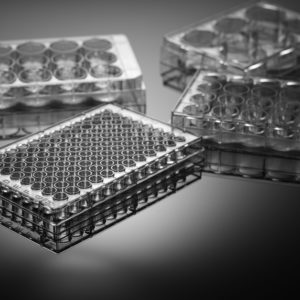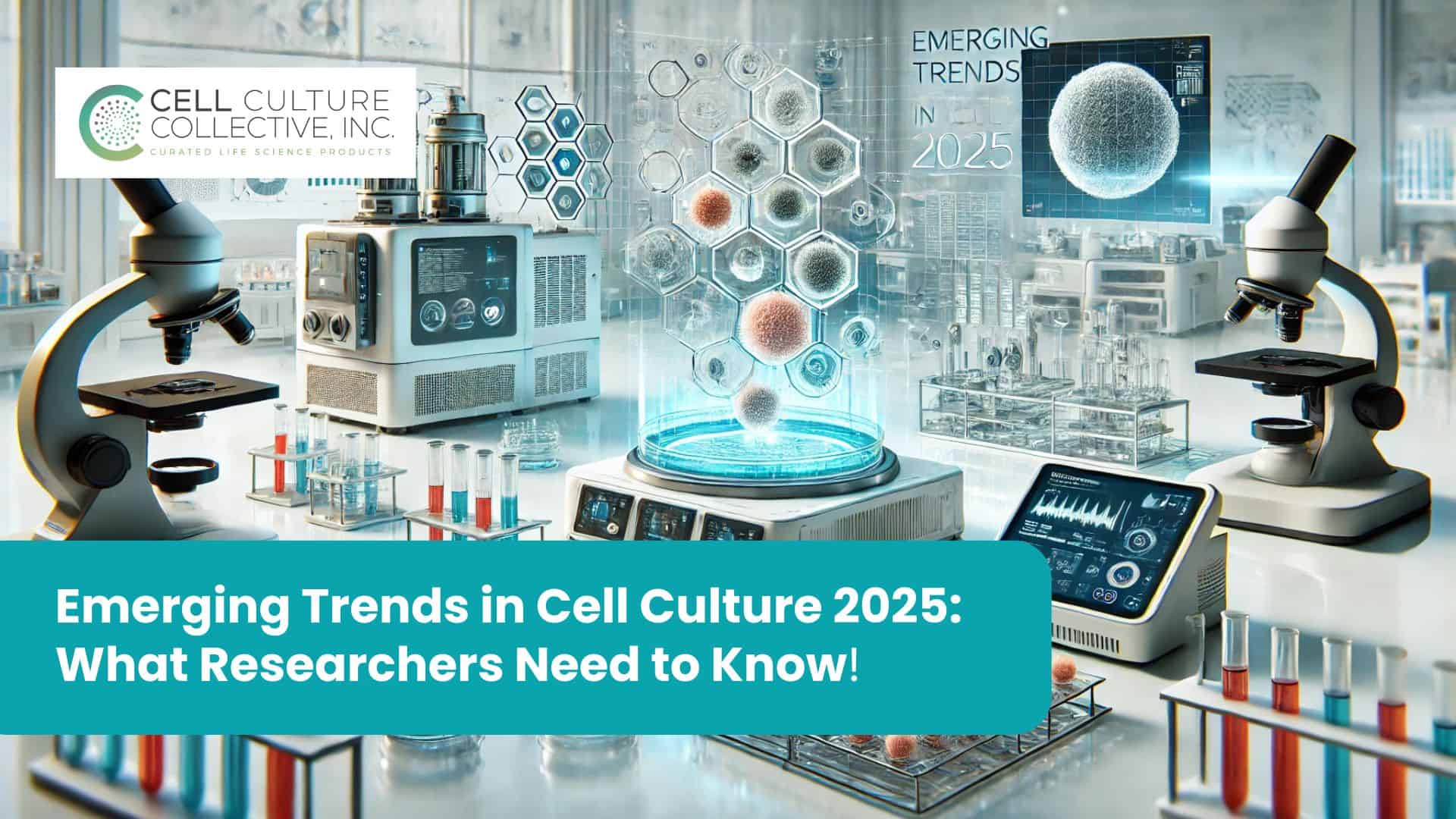Cell culture technology is a cornerstone of biomedical research, providing invaluable insights into cellular functions, drug responses, and so much more. Traditionally, scientists have relied on 2D cell cultures, growing cells in thin layers on flat dishes. However, this method, while useful, often falls short of replicating the complex interactions cells engage in within the human body.
Enter 3D cell culture—a technique that allows cells to grow in three dimensions, mimicking their natural environment far more accurately. This advancement is not just a step forward; it’s a leap towards more realistic and reliable models in scientific research. As we look deeper into this discussion, we’ll explore the benefits, challenges, and profound implications of 3D versus 2D cell cultures, especially in fields demanding high precision like cancer research, drug development, and tissue engineering.
Understanding 2D Cell Culture
2D cell culture has been the bedrock of cellular studies for decades. Scientists grow cells on flat surfaces, typically in Petri dishes or flasks, where they spread out in a single layer. This method has been instrumental in countless scientific breakthroughs, allowing researchers to study cellular behavior, drug efficacy, and more under controlled conditions.
Advantages of 2D Cell Culture
- Simplicity and Cost-Effectiveness: 2D cultures are straightforward to set up and maintain, making them a practical choice for routine laboratory work.
- High Reproducibility: Due to their simplicity, 2D cultures can be easily replicated, ensuring consistent results across different experiments and studies.
- Accessibility: Materials and equipment required for 2D cultures are widely available and familiar to researchers, facilitating widespread use in the scientific community.
Limitations of 2D Cell Culture
Despite its advantages, 2D cell culture comes with significant limitations that can impact the applicability of research findings:
- Unnatural Cell Behavior: Cells in 2D environments do not interact as they would in a living organism. This can lead to alterations in cell morphology, growth patterns, and functions.
- Lack of Cell-Cell and Cell-Environment Interactions: In vivo, cells are part of complex structures and are influenced by the extracellular matrix and neighboring cells. These interactions are poorly replicated on a flat surface.
Understanding 3D Cell Culture
As we transition from the two-dimensional realm, 3D cell culture represents a pivotal shift in biological research, ushering in a new era of precision and complexity. Unlike its 2D counterpart, 3D cell culture allows cells to grow in all three dimensions, which can lead to more physiologically relevant results and improved accuracy in studies.
What is 3D Cell Culture?
3D cell culture involves growing biological cells in environments that allow them to interact in all three dimensions. This method not only respects the natural growth patterns of cells but also facilitates interactions that are crucial for cellular function, mimicking the intricate environment cells experience within an actual organism.
Technological Advancements Facilitating 3D Culture
The leap to 3D has been supported by numerous technological advancements:
- Bioreactors: Devices that provide a controlled environment for 3D cell growth, offering precise control over conditions such as temperature, pH, and nutrient supply.
- Scaffold-Based Techniques: Utilize biocompatible materials that provide a framework for cells to attach and grow, resembling the extracellular matrix.
- Scaffold-Free Techniques: Such as spheroids or organoids, where cells self-assemble into three-dimensional structures without a scaffold.
Benefits of 3D Cell Culture
The shift to 3D cell culture comes with significant benefits:
✔ Enhanced Cellular Behavior: Cells in 3D cultures exhibit natural growth and function, closely resembling their behavior in vivo.
✔ Improved Drug Testing Accuracy: 3D models often predict human reactions to drugs more accurately, reducing the risk of clinical trial failures.
✔ Closer Mimicry of In Vivo Conditions: By replicating the cell’s natural environment, 3D cultures provide deeper insights into cellular mechanisms and disease progression.
Types of 3D Culture Systems
3D cell culture systems can be broadly categorized into two types:
- Scaffold-Based Systems: These systems use solid supports made from materials like collagen, alginate, or synthetic polymers that provide a structure for cells to grow around.
- Scaffold-Free Systems: In these setups, cells are encouraged to self-organize into structures that resemble tissues, often using methods that promote cell-cell interactions over adherence to a substrate.
This transition from 2D to 3D cultures in research and development is not just a change in dimensionality; it’s a fundamental improvement that enhances the biological relevance of cell culture models. As we continue to explore and harness these technologies, the potential for groundbreaking discoveries in medicine and biology grows ever larger.
2D vs 3D Cell Culture
Let us understand 2D vs 3D cell cultures by comparing based on various parameters.
| Parameter | 2D Cell Culture | 3D Cell Culture |
| Cell Morphology | Flat, spread-out cells adhering to surface, often resulting in unnatural shapes. | Cells grow in all dimensions, forming natural, tissue-like structures. |
| Gene Expression | Altered gene expression due to the unnatural physical environment, not reflective of in vivo conditions. | Closer mimicry of in vivo gene expression profiles due to more relevant physical and biochemical environments. |
| Drug Response | Higher sensitivity to drugs due to direct exposure, possibly misleading drug effectiveness and toxicity. | More accurate drug response, reflecting true clinical outcomes due to the replication of tissue-specific architectures and barriers. |
Highlighted Research:
- Cancer Drug Efficacy: A study comparing the effectiveness of a chemotherapy agent in both cultures showed that 3D cultures predicted patient responses more accurately than 2D. (source: ncbi.nlm.nih.gov)
- Tissue Engineering: In regenerative medicine, 3D cultures have been pivotal in developing models that replicate the complexity of human tissues, unlike the more simplistic 2D cultures. (source: ncbi.nlm.nih.gov)
Applications of 3D Cell Culture
- Drug Discovery and Development
The transition from 2D cell culture to 3D cell culture has revolutionized drug discovery processes. Unlike 2D models, 3D cell cultures allow for more complex drug interaction studies, which mimic the human body’s response more accurately.
This shift provides pharmaceutical companies with a more reliable method of early-stage drug testing, reducing the likelihood of drug failure in clinical trials. The contrast in drug efficacy and metabolism between 2D cell culture vs 3D cell culture can significantly impact the development pipeline, making 3D cultures a preferred choice.
- Cancer Research and Personalized Medicine
In cancer research, the advantages of 3D cell culture over traditional 2D models are particularly evident. 3D cell culture models provide a more accurate representation of the tumor microenvironment, enhancing the understanding of cancer progression and response to therapies.
This depth of simulation helps in developing personalized treatment strategies, potentially improving patient outcomes by tailoring specific therapies based on the behaviors seen in 3D cell cultures as opposed to 2D cell cultures.
- Tissue Engineering and Regenerative Medicine
3D cell culture plays a pivotal role in tissue engineering and regenerative medicine, providing the scaffolding necessary to recreate complex biological structures. Whether it’s growing organs or repairing damaged tissues, 3D cell cultures offer a framework that closely mimics natural growth, something that 2D cell culture vs 3D cell culture comparisons highlight as a limitation of 2D methods.

Future Perspectives
Trends and Future Technologies in 3D Cell Culture
As the demand for more sophisticated models grows, so does the innovation in 3D cell culture technologies. Future trends point towards the integration of automation and high-throughput systems that can enhance the efficiency and scalability of 3D cultures. Additionally, the development of hybrid models that incorporate both synthetic and biological materials promises to further bridge the gap between in vitro studies and in vivo realities, showcasing a clear advantage in the 2D cell culture vs 3D cell culture debate.
Potential Impact on Pharmaceutical and Medical Research
The implications of advanced 3D cell culture systems in medical and pharmaceutical research are profound. With a better simulation of human biological systems, researchers can predict more accurate clinical trial outcomes, reduce the time and cost associated with drug development, and potentially accelerate the path from laboratory to patient. As 3D cell cultures continue to evolve, they may soon become the standard, rendering 2D cell culture vs 3D cell culture comparisons more a lesson in historical progression rather than contemporary choice.
Conclusion
Well it’s evident that the realm of biomedical research is not just changing; it’s revolutionizing. Embracing 3D cell cultures brings us closer than ever to mirroring the intricate complexities of human biology. This transition undoubtedly means more intricate work for biologists and researchers! Every advancement in 3D cell culture technology not only opens new avenues in drug discovery, cancer research, and regenerative medicine but also heralds a new era of precision in scientific inquiry and therapeutic development.
As we continue to explore and refine these innovative techniques, the horizon of what’s possible in medical and pharmaceutical research broadens, promising a future where treatments and therapies are as dynamic and complex as the diseases we aim to conquer.
References
- Li, R., Zhang, J., Wang, J., & Wang, J. (2023). Statistical considerations in long-term efficacy evaluation of anti-cancer therapies. Frontiers in Pharmacology, 14. https://doi.org/10.3389/fphar.2023.1265953
- National Institute of Biomedical Imaging and Bioengineering. (2009). Tissue Engineering and Regenerative Medicine | National Institute of Biomedical Imaging and Bioengineering. Nih.gov; National Institute of Biomedical Imaging and Bioengineering. https://www.nibib.nih.gov/science-education/science-topics/tissue-engineering-and-regenerative-medicine
Check out the CultureGro™ line of ECM Coated Plastics:
-

CultureGro™ Gelatin Coated Flasks
$129.69 Select options This product has multiple variants. The options may be chosen on the product page -

CultureGro™ Fibronectin Coated Plates
$354.56 Select options This product has multiple variants. The options may be chosen on the product page -

CultureGro™ Collagen I Coated Dishes
$64.06 Select options This product has multiple variants. The options may be chosen on the product page










